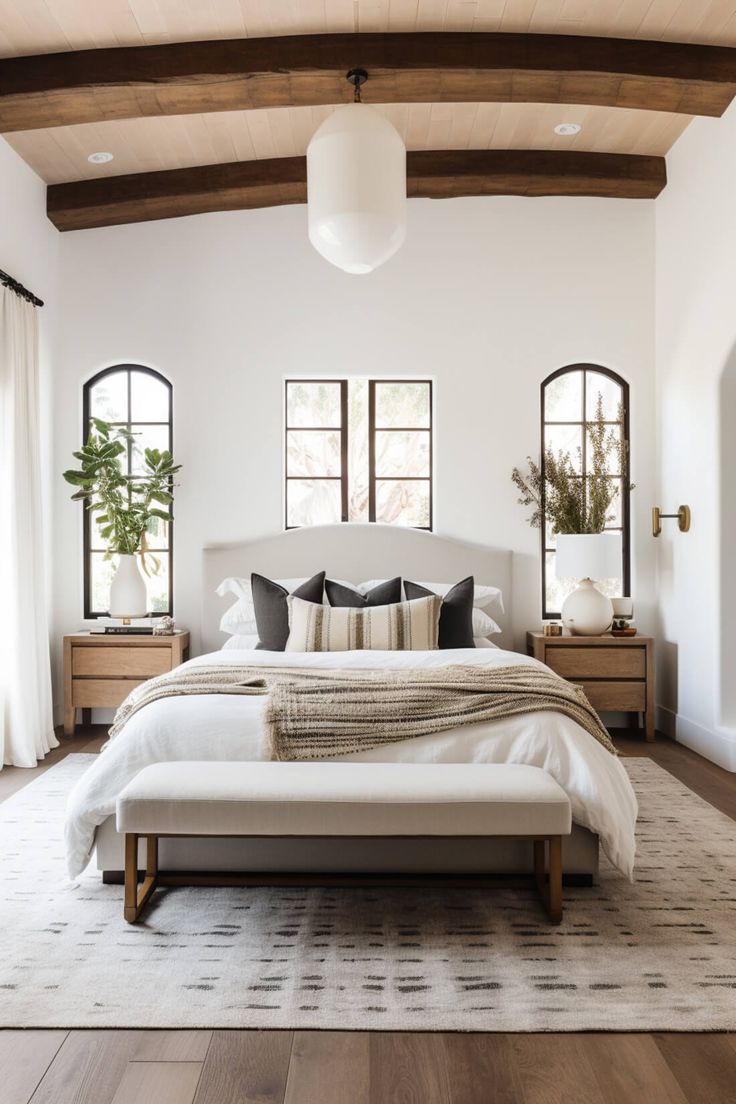Today, we venture into the world of master bedrooms, those luxurious spaces within our abodes where we retreat to find peace and relaxation.
So, you might be wondering what is the average size of a master bedroom?
Well, my friends, it’s the crème de la crème of bedrooms – the grandest suite in the house reserved for the homeowners.
It’s where dreams are dreamt, pillows fluffed to perfection, and secrets whispered into plush pillows.
Regional Differences in Master Bedroom Sizes
Urban vs Rural areas
Urban environments, notorious for their space constraints, often necessitate smaller master bedrooms to accommodate the high population density.
These cozy retreats range from 150 to 300 square feet on average.
In bustling city centers where every inch counts, minimalist design principles are increasingly embraced to optimize space usage.
On the other hand, when we venture into rural settings, where land is more abundant and sprawling estates dot the landscape, master bedrooms tend to take on a more generous scale.
It’s not uncommon to find these rooms exceeding 400 square feet or even more.
With ample space available at their disposal, homeowners in rural areas indulge in creating master bedrooms as sanctuaries of relaxation and personal expression.


Cultural influences
Cultural nuances play a pivotal role in shaping expectations and preferences for master bedroom sizes across different countries and cultures.
For instance, if we compare Asian and Western ideals, significant variations emerge.
In Asian countries like Japan and South Korea, where living spaces are generally compact due to high population density, it is common to find master bedrooms that fall within the modest range of 150-250 square feet. In contrast, Western cultures often associate spaciousness with luxury and affluence.
Consequently, larger master bedrooms are prevalent in these regions as a symbol of prosperity and comfort.
These rooms can reach grand proportions upwards of 400 square feet or even span entire wings within extravagant estates.
Moreover, traditional norms also come into play when determining room size expectations across cultures.
For example, some societies place strong emphasis on communal living spaces over individual retreats like bedrooms.


Niche Subtopics: Unusual Master Bedroom Sizes Around the World
Tiny Homes Movement and Micro-Master Bedrooms
In recent years, the tiny homes movement has gained significant traction, with people downsizing their living spaces to embrace a simpler lifestyle.
As part of this trend, micro-master bedrooms have emerged as a solution for maximizing limited space.
These ultra-compact master bedrooms typically measure less than 100 square feet but are ingeniously designed to incorporate all the essential features.
Despite their diminutive size, these micro-master bedrooms offer innovative space-saving solutions.
Murphy beds or loft beds that retract into the wall during the day allow for additional floor space.
Built-in storage units cleverly utilize every nook and cranny, providing ample room for clothing, personal items, and even a small seating area.
Multi-functional furniture pieces such as collapsible desks or hidden compartments further enhance functionality in these cozy sanctuaries.


Opulent Luxury Estates with Grandiose Master Suites
On the other end of the spectrum lie opulent luxury estates that boast grandiose master suites fit for royalty.
These extravagant bedrooms often exceed average standards in both size and amenities.
Imagine walking into a master suite that spans several hundred square feet, complete with vaulted ceilings and panoramic views of lush landscapes.
In addition to spacious dimensions, opulent master suites indulge homeowners with lavish amenities.
Private lounges equipped with plush seating areas and fireplaces create an intimate retreat within a retreat.
Spa-like bathrooms featuring oversized soaking tubs, steam showers, and his-and-hers vanities transform daily routines into indulgent rituals of relaxation.


Conclusion
So, to wrap things up, the average size of a master bedroom can vary quite a bit depending on factors like location, architectural design, and personal preferences.
Of course, some may be larger or smaller, and it ultimately comes down to what you’re comfortable with and what fits your lifestyle and needs.
Whether you prefer a cozy retreat or a spacious sanctuary, the size of your master bedroom should cater to your individual tastes and make you feel right at home!






